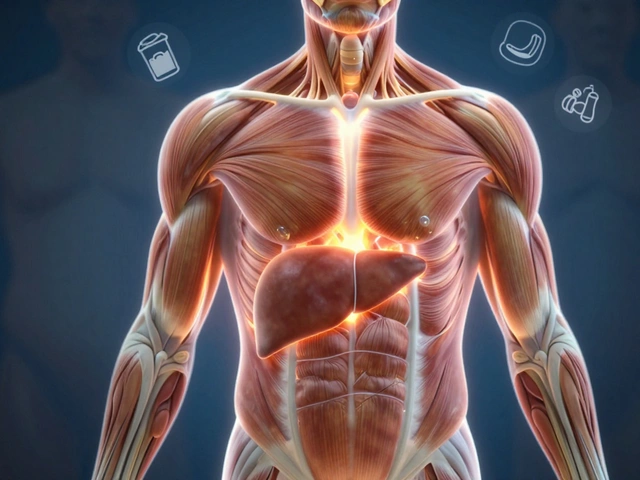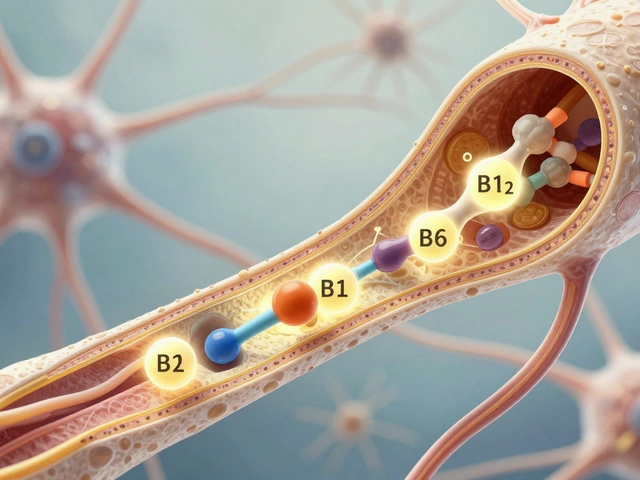Mental illness can be an invisible burden, and for far too many, a deeply painful one. While all mental health conditions can pose challenges in different ways, some stand out due to their intensely distressing symptoms and the profound effect they can have on daily life. It's important to shed light on these conditions to increase understanding and provide hope and help to those affected.
Each mental illness carries its own set of challenges and the way it impacts an individual's life can vary greatly from person to person. However, chronic conditions like major depression, bipolar disorder, and borderline personality disorder are often highlighted due to the significant emotional and psychological toll they take. These conditions can disrupt a person's thoughts, behavior, and even their relationships with family and friends.
Their complex nature often means those affected might find it difficult to find the right approach to management and recovery. But through effective therapy and support systems, improvement is possible. This article examines some of the most challenging mental illnesses, the reasons they are considered so debilitating, and explores the various strategies that can help individuals cope with their daily struggles. Understanding these illnesses better is not only crucial for those living with them but also for those around them who wish to offer meaningful support.
- Introduction to Mental Illness and Its Impact
- Identifying the Most Painful Mental Illnesses
- Exploring Symptoms and Causes
- The Effect on Daily Life and Relationships
- Therapeutic Techniques and Coping Strategies
- Supporting Loved Ones with Mental Illness
Introduction to Mental Illness and Its Impact
Mental illness affects millions of people worldwide, crossing geographic, economic, and cultural boundaries. It is not just a challenge that affects an individual's mind; it also has profound ramifications on every facet of one's life, including personal relationships, employment, and physical health. Though society has made strides in understanding and addressing mental health issues, misconceptions still persist, often resulting in stigma that can impede those afflicted from seeking necessary help.
Understanding Mental Illness
Mental illness encompasses a wide range of conditions, including depression, anxiety, schizophrenia, and bipolar disorder, each with its unique set of symptoms and challenges. The impact of these conditions can't be understated as they often alter how an individual thinks, feels, and interacts with the world. According to the World Health Organization, one in four people will be affected by mental health disorders at some point in their lives, highlighting both the ubiquity and significance of mental health awareness.
"Mental illness is nothing to be ashamed of, but stigma and bias shame us all," noted Bill Clinton, emphasizing the critical need for an empathetic approach toward affected individuals.
Diagnosing mental health disorders can be complicated, as they often present with a combination of emotional, cognitive, and behavioral symptoms. These symptoms might include persistent sadness, significant changes in sleeping or eating patterns, and difficulties in concentrating or making decisions. It's crucial to understand that mental illnesses are just as legitimate as physical ailments; they need appropriate care and attention just as a broken bone or diabetes might require specialized treatment.
The Ripple Effect on Daily Life
Beyond the immediate symptoms, mental illnesses can have a significant impact on daily activities. Those affected might find ordinary tasks like going to work or school or maintaining friendships incredibly challenging. In more severe cases, individuals may become unable to care for themselves, leading to further isolation and distress. The toll is not just emotional, with individuals experiencing greater rates of chronic physical conditions like heart disease and diabetes due to long-term stress and less access to health care. These impacts underscore the importance of viewing mental wellness as part of a holistic approach to health.
Given the complexity of mental health issues, approaches to treatment and management need to be equally nuanced. Professionals often recommend a combination of therapy, medication, and lifestyle changes, depending on the specific needs of the individual. Yet, stigma remains a significant barrier. According to a study by the American Psychological Association, while 91% of adults believe mental health is just as important as physical health, less than half of those with a diagnosable mental health condition receive treatment. This gap signifies the need for increased education and widespread support to help close the gap between awareness and action.
In essence, acknowledging the profound impact of mental illness is a crucial step in supporting those affected. Through continued education and destigmatization efforts, society can move towards a collective understanding that will help bridge gaps in care and support healthier lives for all. By embracing conversations around mental health with openness and compassion, progress is not just possible; it's inevitable.
Identifying the Most Painful Mental Illnesses
Mental health conditions differ in how they affect individuals, but certain mental illnesses are frequently identified as particularly painful due to the severity and nature of their symptoms. One such condition is major depressive disorder (MDD). MDD is not simply feeling down for a few days; it is characterized by a persistent sense of sadness and loss of interest in activities once enjoyed. The emotional weight it carries can be debilitating, often resulting in physical symptoms such as fatigue and changes in appetite. Those suffering from MDD can experience a seemingly relentless cycle of despair that can make basic daily functions appear insurmountable.
Bipolar disorder is another condition that stands out due to its profound impacts on an individual's life. Those with bipolar disorder experience intense mood swings that range from manic highs to depressive lows. During manic episodes, individuals often feel invincible, bursting with ideas and energy, whereas depressive episodes are marked by overwhelming feelings of worthlessness and hopelessness. The unpredictability and extreme nature of these swings can severely disrupt relationships and work life, often leaving the individual feeling exhausted and confused.
Borderline Personality Disorder (BPD) is also one of the most challenging mental illnesses to navigate due to its pervasive pattern of emotional instability, distorted self-image, and intense reactions to perceived abandonment. Individuals experiencing BPD often describe feeling like they live in a constant state of emotional turmoil, never quite certain of their place in the world or in their relationships. This condition can bring a significant amount of distress not only to the individual but also to their loved ones, as they struggle to interpret and manage intense emotions and behaviors.
Anxiety disorders, particularly generalized anxiety disorder (GAD), play a substantial role in everyday discomfort and distress. This condition can manifest as a persistent, excessive worry about numerous life aspects, often without a clear source. The intense anxiety can cause physical symptoms, such as increased heart rate and sweating, and can drastically affect sleep patterns, feeding into a vicious cycle of exhaustion and heightened anxiety.
"The worst part of having a mental illness is people expect you to behave as if you don't," shared a person experiencing chronic mental health challenges during a riveting TED Talk.Obsessive-compulsive disorder (OCD) is another mental illness that can cause significant suffering. It's marked by unwanted repetitive thoughts (obsessions) and actions (compulsions) that the individual feels driven to perform. These compulsions can consume hours of a person's day, leaving little room for other activities or proper relaxation, and the constant presence of intrusive thoughts can be incredibly tiring.
While these conditions are incredibly challenging, recognizing them as such is an important step toward understanding and empathy. It allows for the proliferation of conversation around effective therapy and coping strategies that aim to alleviate the day-to-day struggles faced by those living with these mental illnesses. By acknowledging the pain these conditions can inflict, we move closer to offering comprehensive support to improve the quality of life of those affected.

Exploring Symptoms and Causes
Understanding the symptoms and causes of mental illnesses such as major depression, bipolar disorder, and borderline personality disorder is essential to finding the best management strategies. These conditions often share overlapping symptoms but have distinct characteristics and potential triggers that make each uniquely challenging. For instance, major depression is marked by persistent sadness, loss of interest in previously enjoyed activities, and significant changes in appetite or sleep patterns. Individuals may also experience feelings of hopelessness or worthlessness, which can exacerbate the struggle to maintain daily life activities.
On the flip side, bipolar disorder is characterized by extreme mood swings that include emotional highs (mania or hypomania) and lows (depression). During manic phases, individuals can feel euphoric, full of energy, or unusually irritable, which can lead to poor decision-making and risky behaviors. The depressive phases can be particularly debilitating, echoing many of the symptoms experienced during major depression. The exact cause of bipolar disorder is unclear, but a combination of genetic, neurochemical, and environmental factors are believed to contribute to its development.
Borderline personality disorder (BPD) presents its own set of complex symptoms, primarily involving instability in mood, self-image, and personal relationships. This instability often results in impulsive actions and intense episodes of anger, depression, or anxiety that may last just a few hours or, at most, a day. People with BPD may have a history of unstable relationships and an intense fear of abandonment. While the precise cause of BPD is not fully understood, traumatic life events, particularly in childhood, and a genetic predisposition may significantly raise an individual's risk of developing this condition.
Research indicates that genetics can play a crucial role in the development of these mental health conditions. For instance, having a family member with a mental illness increases one's risk for the same disorder, indicating that hereditary factors are influential. A study published in 2018 demonstrated that about 40-70% of the risk for developing major depression could be attributed to genetics. This table highlights some of the genetic statistics taken from various studies:
| Condition | Genetic Contribution |
|---|---|
| Major Depression | 40-70% |
| Bipolar Disorder | 60-80% |
| Borderline Personality Disorder | 30-60% |
Aside from genetics, environmental factors such as stress, trauma, and even prolonged periods of social isolation can serve as significant catalysts for the onset of symptoms. Neurological studies have shed light on how chemical imbalances in the brain may contribute to mood disorders. For example, an imbalance in neurotransmitters such as serotonin, norepinephrine, and dopamine may exacerbate conditions like major depression and bipolar disorder, affecting emotion regulation and mood stability.
In examining these multifaceted causes, Dr. Sarah Johnson from the National Institute of Mental Health notes, "Understanding the unique biological, genetic, and environmental triggers of mental illnesses is imperative in moving toward more personalized and effective treatment options." This realization underscores the need for comprehensive approaches tailored to each individual's specific symptoms and causes. While the complexity of these disorders might seem daunting, increasing awareness and research advances provide hope for better interventions and support systems.
The Effect on Daily Life and Relationships
Living with a mental illness often presents a myriad of unparalleled challenges that manifest daily, intricately weaving into the fabric of one's personal and social life. Conditions such as major depression, bipolar disorder, and borderline personality disorder can drastically alter an individual’s routine, making seemingly simple tasks insurmountably difficult. Many individuals report feeling weighed down by relentless fatigue and heaviness, a condition described by the term 'mental fog,' where focusing on even the smallest details becomes an ordeal. This persistent battle against one's own mind can lead to difficulty in maintaining regular employment or managing daily responsibilities at home.
Beyond personal lives, the ripple effect of mental illness often extends to relationships, creating strain and misunderstandings. Friends and family members may find it hard to comprehend the emotional and behavioral changes in their loved ones. This can sometimes lead to feelings of frustration and helplessness. Communication becomes key, yet is often the first area to break down in these situations. Individuals experiencing mental illness might withdraw due to their struggles, often being perceived as detached or disinterested, causing emotional distance. As such, relationships can become entangled in a cycle of misinterpretation and tension.
One notable study by the National Institute of Mental Health highlights that nearly 50% of those diagnosed with a mental illness report significant difficulties in personal relationships. These statistics underscore the challenges faced in forming or maintaining connections. A supportive environment plays a critical role in managing these conditions, but without understanding and patience from loved ones, individuals may retreat further into isolation. As conversation and empathy become central to navigating these difficult waters, it is important to approach these discussions with empathy and patience.
A wise remark from psychologist Marsha Linehan notes, 'The aim of therapy is to help people live a life worth living, not perfect, but filled with meaning.'
Creating a balance between personal struggles and the demands of social life remains essential. Encouraging self-compassion and understanding that recovery is a process can foster resilience in dealing with the inherent tumult of these illnesses. Engaging in targeted therapy strategies such as Cognitive Behavioral Therapy (CBT) or Dialectical Behavior Therapy (DBT) can empower individuals to develop healthier patterns of interaction and emotional processing. For loved ones, educating oneself about these illnesses can pave the way for more genuine support and remove the stigma often associated with mental health issues.

Therapeutic Techniques and Coping Strategies
Exploring effective therapeutic techniques and developing coping strategies can make a significant difference for individuals grappling with **mental health** challenges. Various therapeutic approaches can offer relief and a sense of control to those experiencing conditions like chronic depression, bipolar disorder, and borderline personality disorder. One widely acknowledged method is Cognitive Behavioral Therapy (CBT), which focuses on identifying and changing negative thought patterns and behaviors. CBT is conducted through structured sessions with a trained therapist, where individuals learn to recognize detrimental thinking patterns and gradually replace them with more positive, adaptive thoughts. This approach not only improves mental health but equips individuals with the skills needed to handle day-to-day situations effectively.
Another therapeutic approach worth noting is Dialectical Behavior Therapy (DBT). Originally developed to treat borderline personality disorder, DBT has proven beneficial for a range of **painful mental illnesses**. A core component of DBT is mindfulness, enabling individuals to focus on the present moment and reduce overwhelming emotions. Additionally, DBT provides tools for distress tolerance and emotional regulation, which are invaluable for managing intense feelings that often accompany mental health conditions. With its structured modules, DBT empowers individuals to build a life they consider worth living—a vital aspect of long-term recovery.
"DBT has helped many individuals enhance their emotional resilience, providing them with skills to navigate complex interpersonal relationships," says Dr. John Smith, a leading psychotherapist specializing in emotional disorders.
Medication can also be an essential component of an effective therapeutic plan. Antidepressants and mood stabilizers, when prescribed by a psychiatrist, can help reduce symptoms significantly, especially when combined with psychotherapy. It's crucial, however, for individuals to have regular consultations with healthcare providers to tailor medication to their specific needs, adjusting dosages and exploring alternatives as necessary.
In addition to professional therapy, personal coping strategies play a crucial role. These strategies can include mindfulness exercises, such as meditation and breathing techniques, which help in managing stress and anxiety. Regular physical activity is another excellent strategy, where activities ranging from brisk walking to yoga can release endorphins and improve mood. Engaging in hobbies and maintaining a routine offer structure and provide a sense of accomplishment, vital in breaking the cycle of negative thinking associated with **mental illness**.
Building a Support System
Just as important as professional guidance is the support network that encircles a person. Family and friends can provide invaluable emotional support by offering compassion and understanding. Attending support groups where individuals share experiences with others who understand the struggles of mental health can also be comforting. This sense of community fosters connection and diminishes the feeling of isolation, which often accompanies mental illnesses.
Exploring personalized combinations of therapies and coping mechanisms often results in better outcomes for individuals living with painful mental illnesses. The journey toward mental wellness is unique for everyone; thus, flexibility in trying new approaches is key. The resources and assistance part of our environments—from therapists to loved ones—form the scaffold upon which individuals can build resilience and joyous life.
Supporting Loved Ones with Mental Illness
Supporting a loved one who is living with a mental illness is a challenge that requires a combination of empathy, education, and a strong support system. It's important to first acknowledge that mental illness can manifest in numerous ways, and its impact on daily life is profound. Often, the most painful aspect for sufferers is the feeling of isolation that can accompany these conditions. As a supporter, being informed about the specific symptoms and challenges your loved one faces helps alleviate some of their burden. One crucial step is to maintain open lines of communication. This means actively listening to their experiences without judgment or trying to offer quick solutions. It’s often in these conversations that they feel most understood and valued, which can be incredibly healing.
Another key component of support is helping them to establish and maintain healthy routines. Encouraging habits such as regular exercise, a balanced diet, and adequate sleep can have a significant positive impact on mental health. Emotional encouragement is pivotal—small gestures like acknowledging their efforts and progress, no matter how minimal, can boost their morale and motivation. Ensuring that they stay connected with a mental health professional is equally critical. Sometimes, loved ones may feel reluctant to seek therapy or keep up with medication, and gentle reminders of the benefits of staying on track can be instrumental.
Education plays a vital role in providing effective support. Understanding the nature of the specific mental illness your loved one is dealing with can improve your capacity to empathize and provide appropriate help. Knowledge is a tool that can dismantle stigma and foster a supportive environment. For instance, knowing that depression can cause physical symptoms such as fatigue or pain and not merely affect one's mood can be enlightening in understanding their experience. Facilitating access to mental health resources, whether they be online communities or local support groups, can be another lifeline.
"The greatest healing therapy is friendship and love," said Hubert Humphrey, capturing the essence of offering genuine companionship during difficult times.
Speaking of companionship, establishing a safe space where your loved one feels comfortable sharing their struggles without fear of retaliation or misunderstanding is essential. Sometimes this may involve adjusting expectations or re-evaluating one's approach to conflict to ensure it doesn't exacerbate their stress. Recognizing signs of a crisis, such as talk of self-harm or suicide, and knowing how to respond promptly by contacting professionals can save lives. It’s also important to respect their journey, acknowledging that recovery is a process with ebbs and flows. Being patient and offering unconditional support during setbacks encourages a positive recovery path.
For those unsure about how to approach support, starting with small steps is beneficial. Creating a checklist of supportive actions can be helpful; for example, setting regular check-ins or planning meaningful activities can provide structure and stability. Encouragement to express their feelings through creative outlets like writing or painting can also be healing. Indeed, having a loved one equipped with these understanding strategies can make a monumental difference as they navigate the labyrinth of life with mental health challenges.










